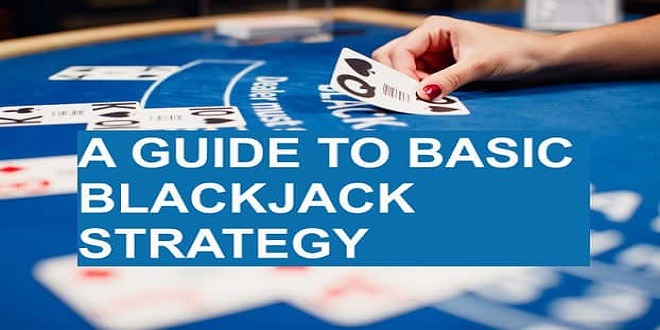HITTING AND STANDING HARD TOTALS
These strategies are applicable for single and multiple-deck games in all casino centers.
General principles
- When the dealer shows a 7, 8, 9, 10 or A, hit all hard totals of 16 or below (unless doubling or splitting is more profitable—in any case, you will always draw a card).
- When the dealer shows a 2, 3, 4, 5 or 6, stand on all hard totals of 12 or more. Do not bust against a dealer stiff card. Exception—Hit 12 versus 2, 3.
Reading the Charts
In all our charts, the dealer’s up card is indicated by the horizontal numbers, (running left to right) on the top row, and the player’s hand is indicted by the vertical numbers (up and down) in the left column. The letters in the matrix indicate the correct strategy play.
Hitting and standing soft totals
The strategy for hitting and standing with soft totals in Northern Nevada and Europe is identical to the Atlantic City and Las Vegas strategies for both single and multiple deck, except that the Atlantic City and Las Vegas basic strategy players can take advantage of the more liberal doubling rules. As a result, they will double down on hands that bettors playing Northern Nevada and European Style rules cannot.
Doubling down
Doubling down is a valuable option for it gives you a chance to double your bet in advantageous situations. The only drawback to the doubling option is that you receive one card, giving up the privilege to draw additional ones should that card be a poor draw.
To determine if the doubling option will be profitable, we must weigh the benefits of doubling our bet against the drawbacks of receiving only one card. One of the most important factors to consider when contemplating the doubling option is the ten factor. We are more likely to draw a 10 on our double than any other card value. Thus, doubling on a total of 11, where the drawing of a 10 gives us an unbeatable 21, is a more powerful double than an initial twocard total of 9, where the drawing of 10 gives us a strong total of 19, not nearly as powerful as the 21.
Multiple deck doubling strategy
You’ll notice that the doubling strategies for multiple-deck play are somewhat less aggressive than the single-deck game, a difference we’ll discuss a little later on. First we’ll discuss Northern Nevada, where there are three changes from single-deck play, then Atlantic City and Las Vegas, where there are seven differences, and finally, European style, where there are five differences in doubling strategy from single-deck play. However, only concern yourself now with the proper play for the games you’ll face, and when you encounter different conditions and rules, then make the slight adjustments necessary for that game.
Conceptual doubling—hard totals (11, 10, 9, 8)
These strategies are applicable to single and multiple-deck games in all casino centers. Where multiple deck strategies differ from the single deck, an asterisk will denote the strategy change, and that change will be indicated.
Conceptual doubling—soft totals
The high concentration of tens play a different role in soft doubling than in hard doubling, for instead of having a positive effect on our chances of making a good total, the drawing of a 10 will not even give us a pat hand on many of these situations.
Doubling with soft totals is generally a gain against weak dealer upwards. The ten factor figures strongly in the dealer’s chances of busting, while on the other hand, the drawing of small and medium cards will often improve our hand to a competitive and winning total.
Splitting pairs
Splitting can do two valuable things. It can turn one poor total into two stronger hands, such as splitting a hard 16 (8-8) into two hands of 8 each, and it effectively doubles our bet. The decision to split requires a closer look at our hand versus the dealer’s hand. To come to the right decision, we must balance the standing total of our hand against the two proposed split hands and see if the split and resultant doubling of our bet increases our expectation of winning.
Conceptual splitting
We will examine the decision to split 99 first, for it is a good example of the thinking process involved in splitting. First of all, we should note that this hand totaling 18 is only “fair,” not a powerful total like a 19 or 20.
Lastly Comment
In no-hole-card rule games, we will not split aces when the dealer shows an ace. The high likelihood of the dealer getting a blackjack when he already has an ace is too costly for us to double our bet. Draw instead.






